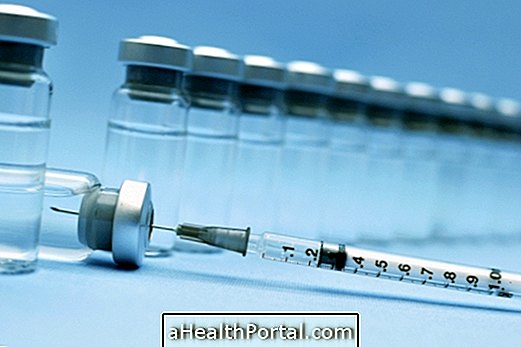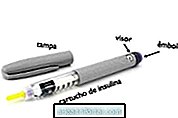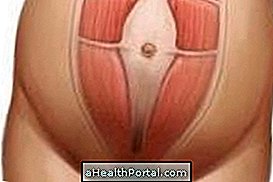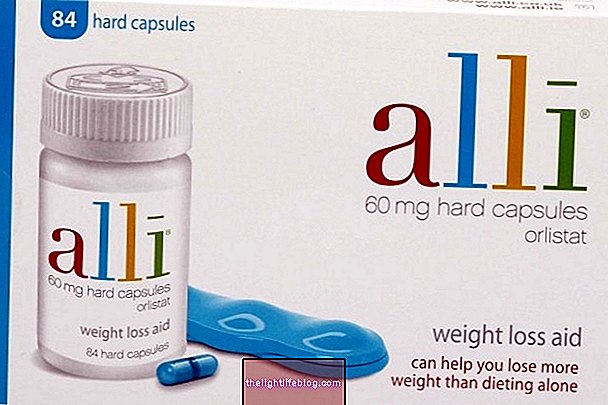Insulin is a hormone produced naturally by the body to control blood glucose levels, but when not enough is produced for this function, as in diabetes, it is necessary to use drugs with synthetic insulin.
There are several types of synthetic insulin, such as regular insulin, NPH, Lispro, Glargina or Detemir, for example, that mimic the action of the body's natural hormone at each moment of the day and are applied through daily injections of skin with syringes, pens or small specialized pumps.
Thus, insulin helps normalize the blood glucose values detected by the blood test and allow the diabetic to maintain a healthy life and avoid the complications of diabetes, such as retinopathy, renal failure and myocardial infarction, for example.
However, its use should only be initiated by indication of the general practitioner or endocrinologist, because the type of insulin and its quantities vary according to the needs of each person.

Main types of insulin
The types of insulin differ according to the time of action and the time at which they should be applied, including:
1. Insulin Detemir, Deglutega or Glargina
These are slow - acting or prolonged-acting insulin, which lasts for a whole day, so the amount in the blood remains constant to imitate basal and minimal insulin throughout the day. The main types are Detemir (Levemir), Deglutega (Tresiba), which last more than 24 hours or Glargina (Lantus), which lasts for more than 30 hours.
Currently there are ultralong insulins, which come to act for 2 days, which can reduce the number of bites and improves the quality of life of the diabetic.
2. Insulin NPH, Slow or NPL
This type of insulin is considered an intermediate action and acts for about half of the day, between 12 and 24 hours, and the main types are NPH (Novolin N, Humulin N, Insulatard), Slow (Humulin L, Novolin L) and NPL (Humalog Mix).
It can also mimic the basal effect of insulin, being applied 1 to 3 times a day, depending on the amount needed for each person, and the orientation of the doctor.
3. Regular Insulin
Also known as fast acting or regular insulin (Novorapid, Humulin R or Novolin R), it is an insulin that should be given about 30 minutes before the main meal, usually 3 times a day, and helps maintain glucose levels stable after eating food.
4. Insulin Lispro, Aspart or Glulisine
It is a type of insulin is the ultra-fast acting insulin, which has the most immediate effect, and should be applied immediately before eating or, in some cases, immediately after eating, mimicking the action of the insulin that is produced when we eat to keep your blood sugar levels high.
The main ones are Lispro (Humalog), Aspart (Novorapid Flexpen) or Glulisina (Apidra).
Characteristics of each type of insulin
The characteristics that differentiate the main types of insulin are:
| Type of insulin | Start of action | Action Peak | Duration | Insulin Color | How much to take |
| Ultra-fast action | 5 to 15 min | 30 min at 1 hour and 30 min | 4 to 6 hours | Transparent | Just before meals |
| Quick Action | 30 to 60 min | 2 to 3 hours | 6 to 8 hours | Transparent | 30 min before meals |
| Intermediate Action | 2 to 4 hours | 5 to 8 hours | 12 to 18 hours | Milky and cloudy | Usually 2 to 3 times a day |
| Slow Action | 2 to 4 hours | no peak | 24 to 30 hours | Transparent | Usually once a day |
The onset of insulin action corresponds to the time it takes insulin to start taking effect after administration and the peak of action is the time at which insulin reaches its maximum action.
Some diabetics may require fast-acting, ultra-fast, and intermediate-acting insulin preparations, called premixed insulin, such as Humulin 70/30 or Humalog Mix, for example, to control the disease, and is usually used for to facilitate its use and to reduce the number of bites, mainly by elderly people or with difficulty to prepare the insulin due to motor or vision problems.
In addition to the insulin injections applied with a specialized pen or syringe, the insulin pump, which is an electronic device that attaches to the body and releases insulin for 24 hours, can also be used, and allows for better control of sugar levels in the blood. blood and diabetes, and can be used for individuals of all ages, usually in type 1 diabetes. Learn more about how to use and where to find the insulin pump.
How to apply insulin
In order for any type of insulin to take effect, it is essential to apply it correctly and for this it is necessary to:
- Make a small fold in the skin, before applying the injection, so that it is absorbed in the subcutaneous region;
- Insert the needle perpendicular to the skin and apply the medication;
- Vary the sites of the injections, between arm, thigh and belly and even in these places is important to rotate, to avoid hematomas and lipohipertrofia.
In addition, it is important to keep the insulin in the refrigerator while it is not opened and after the package is opened it must be protected from the sun and heat and should not be used for more than 1 month. Understand the details of how to use insulin.



















